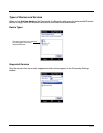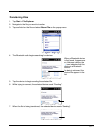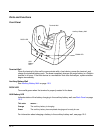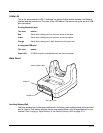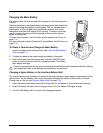
11 - 1
11
Working with GPS
Overview
The Dolphin 9700 terminal contains an integrated GPS module that allows location tracking of workers
and vehicles, providing better utilization of field assets. Optional mapping and navigation software
provides turn-by-turn driving directions and location information.
Assisted GPS Support
The operating system software does not inhibit nor explicitly support assisted GPS modes, which usually
requires installing a vendor-specific client on the terminal that communicates with the GPS module. This
client would then provide the almanac and/or ephemeris data for warm or hot start modes of operation,
allowing a lower time to first fix (TTFS). The Client must be configured on the terminal, active, and provide
the data to the GPS module through the standard COM port.
Powering the GPS Module
The GPS module powers on automatically when accessed by a software application and powers off
automatically when that software application closes. You cannot manually power on and off the GPS
module.
Communication Ports
There are two ways to access the GPS module: through the actual COM port (COM7) or the GPS
Intermediate Driver. The method you use depends on the software application you are using. If the
software application requires the actual COM Port, set the operating system to use COM7. If the software
application requires the GPS Intermediate Driver, set the operating system to use the GPS Intermediate
Driver.
Selecting the Port
1. Tap Start > Settings > System > External GPS.
2. In the GPS program port: drop-down list, select COM7 or GPD1 (the GPS Intermediate Driver) as
required by the application.
3. Tap OK to save.







